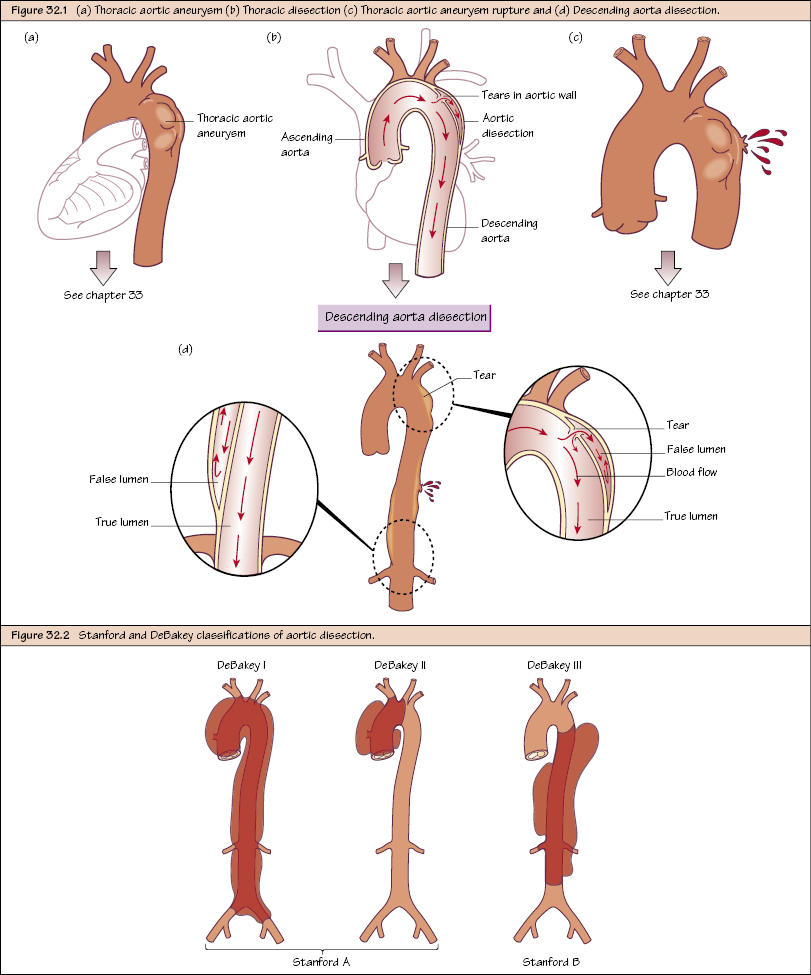Thoracic Aortic Disease I: Dissection Cardiothoracic surgeons tend to manage the thoracic aorta where the disease process includes any part of the aorta proximal to the origin of the left subclavian artery. Distal to the left subclavian artery origin is vascular surgeon territory. There are three principal disease processes affecting the thoracic aorta that present to vascular surgeons: Thoracic dissection will be dealt with in this chapter, trauma in Chapter 39 and aneurysmal disease in Chapter 33. A tear in the thoracic intimal lining allows blood to track into the aortic wall itself where it may create a false channel, usually between the inner 2/3 of the media and the outer 1/3. The flowing blood in the false channel can: The blood flowing in the usual way through the normal lumen is called the ‘true lumen’. The blood flowing under the flap is the false lumen

Overview
Thoracic Dissection
![]()
Stay updated, free articles. Join our Telegram channel

Full access? Get Clinical Tree


